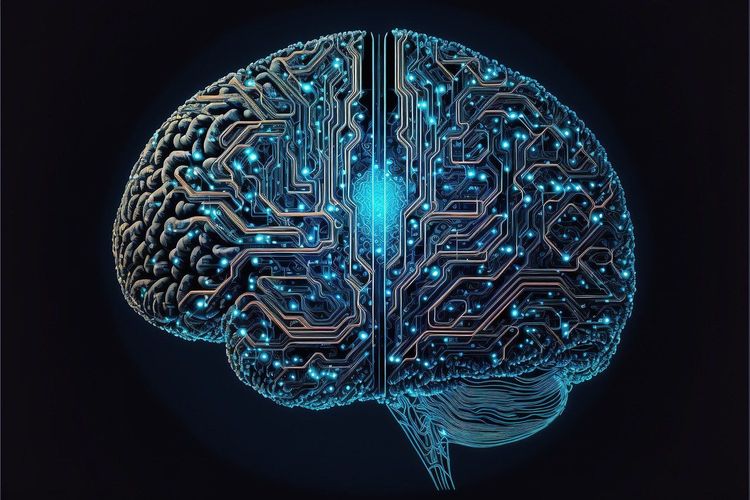When a sales representative at Glean, an innovative enterprise search company, prepared for a crucial client meeting, they utilized their generative AI tool. Within minutes, the system analyzed years of emails, Slack messages, and recorded calls, delivering a comprehensive overview of the client relationship and identifying opportunities that would have taken hours to uncover manually.
This was no ordinary AI chatbot; it was a sophisticated search system designed to comprehend the intricate relationships within the company’s data. The result? Enhanced operational insights that could transform business strategies.
The Impact of AI Agents
The power of this technology isn’t just theoretical. One of the world's largest ride-sharing companies recently experienced its benefits firsthand. After investing in an in-house solution, they ultimately transitioned to Glean’s platform.
“Within a month, they doubled usage on the Glean platform, leading to a saving of two to three hours per employee each week, equating to over $200 million in annual savings globally,” said Matt Kixmoeller, CMO at Glean.
Knowledge Graphs: A Game Changer
This significant return on investment (ROI) isn't an isolated case. As organizations rush to integrate generative AI, knowledge graphs are emerging as the key to transformative applications.
For data engineers, the challenge of optimizing data pipelines and enhancing AI performance under budget constraints is relentless. Knowledge graphs, with their ability to represent complex data relationships, are changing the game. When paired with Retrieval Augmented Generation (RAG) systems, they give rise to GraphRAG—an approach that enhances the accuracy and context-awareness of AI outputs.
Glean recently secured $260 million in funding, highlighting market interest in knowledge graphs as they offer solutions ranging from turnkey implementations to advanced custom applications.
Although initial investments can be substantial, the long-term benefits in data integration, generative AI performance, and operational efficiency are profound. As this technology matures, knowledge graphs will become essential tools for data teams seeking to build intelligent, context-aware, data ecosystems.
Understanding Knowledge Graphs
To grasp the concept of knowledge graphs, think of them as a complex sentence:
- Nodes are nouns, representing entities or concepts, such as “customer” or “product.”
- Edges are verbs, indicating relationships between nodes, like “purchased” or “attended.”
- Properties are adjectives or adverbs, providing extra information, such as “purchase date” or “meeting duration.”
This dimensionality allows automated systems to reveal insights that otherwise may remain hidden, though it introduces additional complexity.
“A knowledge graph efficiently represents and queries these complex relationships,” said Neo4j CTO Philip Rathle. “But managing security and permissions across extensive data sets poses real challenges.”
RAG and GraphRAG: Elevating AI Performance
Retrieval Augmented Generation (RAG) enhances AI models with relevant information from a knowledge base before generating responses. Traditional RAG systems commonly rely on vector databases for locating text chunks based on semantic similarity.
GraphRAG advances this concept by utilizing structured relationships in knowledge graphs. “The combination of a sophisticated knowledge graph and LLMs is where the real power lies,” explained Arjun Landes, engineering manager at Glean.
GraphRAG facilitates nuanced information retrieval, as it navigates relationships and hierarchies that flat text representations might miss. This capability reduces hallucinations and improves explainability in LLM outputs. “GraphRAG can achieve near 100% accuracy in cases with exact answers,” said Rathle, emphasizing enhanced explainability and security compared to vector-based RAG.
Implementing Knowledge Graphs on a Budget
For many organizations, especially those with budget constraints, implementing knowledge graph technology may seem intimidating. However, cost-effective strategies exist.
Dexter Tortoriello, co-founder and CTO of MindPalace, noted that we’re in the early stages of GraphRAG consolidation, where many prefer building blocks over turnkey solutions. Open-source tools like Neo4j’s community edition and frameworks such as NebulaGraph can significantly reduce implementation costs.
Rathle highlighted Neo4j’s value proposition: “We facilitate knowledge graphs through connectors, APIs, and query languages, making it easier for organizations to leverage their data.”
The Future of Knowledge Graphs in Enterprise Data
As technology evolves, we expect automated knowledge graph creation to become more user-friendly and cost-effective. Michael Hunger, Neo4j’s head of product innovation, anticipates significant cost reductions in entity and relationship extraction, making it easier for enterprises to adopt knowledge graphs.
Generative frameworks like Langchain and LlamaIndex are emerging as allies in this space. Langchain organizes workflows as interconnected nodes and edges, enhancing retrieval efficiency. Similarly, LlamaIndex offers flexibility in building and querying knowledge graphs using LLMs.
Key features include natural language querying and a property graph index that improves AI accuracy and governance.
Challenges and Considerations
Despite the promise of knowledge graph technology, challenges arise, including data integration issues and the need for specialized skills.
Kixmoeller pointed out the complexities: “Enterprise environments are messy, with information spread across multiple systems. Governing this knowledge and connecting it with AI techniques remains challenging.”
To overcome these obstacles, organizations may need to invest in training or collaborate with knowledge graph experts. As the technology matures, we can expect an increase in skilled professionals and user-friendly tools to streamline implementation.







